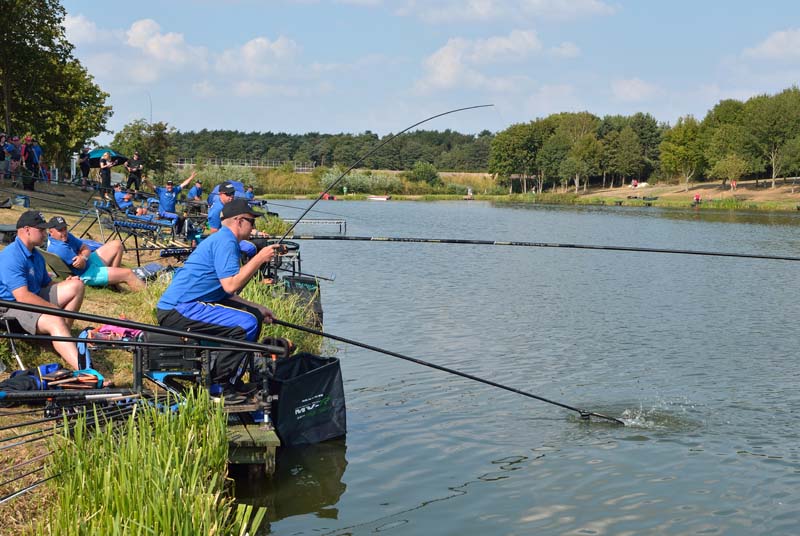Tweak your shallow fishing and catch more...
The continuing hot spell isn’t conducive to some common lake tactics.
Fishing shallow on commercials, though, is a very reliable route to getting a few bites when carp are cruising around close to the surface and enjoying a bit of sun.
On the face of it, shallow fishing seems straightforward but, as with any style of fishing, there are little tweaks to get the most out of your day, from changing depth, varying the amount you feed and even trying to catch carp without feeding anything at all.
West Midlands matchman Peter Black knows a thing or two about shallow fishing as he won the £50,000 Fish O’Mania XXV Final by doing exactly that with pellets at Hayfield Lakes.
Still basking in his win, we caught up with the Fosters tackle shop worker to get the lowdown on his special shallow approach…
The correct depth
“This all depends on what type of fish you are after. Carp feed at different depths to F1s and tend to be around 18ins to 2ft under the surface, whereas F1s feed shallower, as little as 8ins or 10ins at times.
“These would be my starting depths if fishery rules allow.
“I’ll come shallower if I am missing bites or getting line bites that tell me that the fish have come further up in the water.
“On the flipside, it can pay to have a rig set up to fish 3ft-4ft deep on lakes with over 12ft of water. The fish may be sitting deeper than you’d expect.”
The right rig
“You don’t need heavy floats to fish shallow. I try and go as light as I can get away with, relevant to the conditions.
“My shallow rigs use floats between 4x12 and 4x8 and I’d almost always fish the lighter end of this range. Two floats cover most of my summer shallow fishing, the Preston Innovations Des Shipp Shallow for carp – which has a bristle to let me fish slightly deeper – and a Drennan Crystal Dibber for F1s.
“Mainline is always 0.18mm in diameter as it doesn’t tangle and, to me, it doesn’t make any difference to how well I catch, but hooklink diameter and length will vary. For carp I use an 8ins hooklength of 0.16mm with the shot underneath the float, while for F1s, that’s 0.13mm or 0.12mm at 4ins long with the shot placed just above the hooklink. Hook choice is a Guru LWG in sizes 18 and 20 for F1s, or an MWG size 16 for out and out carp fishing.”
Slapping and tapping
“In addition to feeding from feeding, you can use other ways to get the fish competing. One involves slapping and tapping.
“Carp and F1s respond to noise created on the surface and if I’m fishing for carp I’ll loosefeed and then slap the float and hookbait hard on the surface afterwards to create a second splash.
“If F1s are the target, slapping is good but I’d focus on tapping, which involves feeding and then splashing the tip of the pole on the water quickly for a few seconds.
“Often the pole will hoop over as a fish takes the bait!”
Top baits
“Without a doubt that’s pellets, either 6mm for carp or 4mm for F1s. Bigger 8mm pellets create a good bit of noise when they land and are worth a try, but I wouldn’t feed these – being bigger, you feed fewer of them at a time and so aren’t putting enough food into the peg.
“The only other baits I’d use for shallow fishing are casters. These can work brilliantly when fish are really shallow, although they’re more expensive than pellets. I like to feed with what I’m using on the hook, so it’d be double caster in this instance.”
Mug or feed?
“If I can see fish on the surface I would still loosefeed. Trying to mug them off the top by putting a bait in front of them may not work for the full session. I’ll begin by mugging, swinging the bait on top of the carp or in front of them to see how well this works, but I’ll loosefeed one area to give me a focal point to fall back on if the mugging isn’t going well.
“This area is fed with around 10 to 20 hard pellets or casters every minute or so. I rarely feed more than this each time, as more bait can force the fish deeper than I’d like.”



